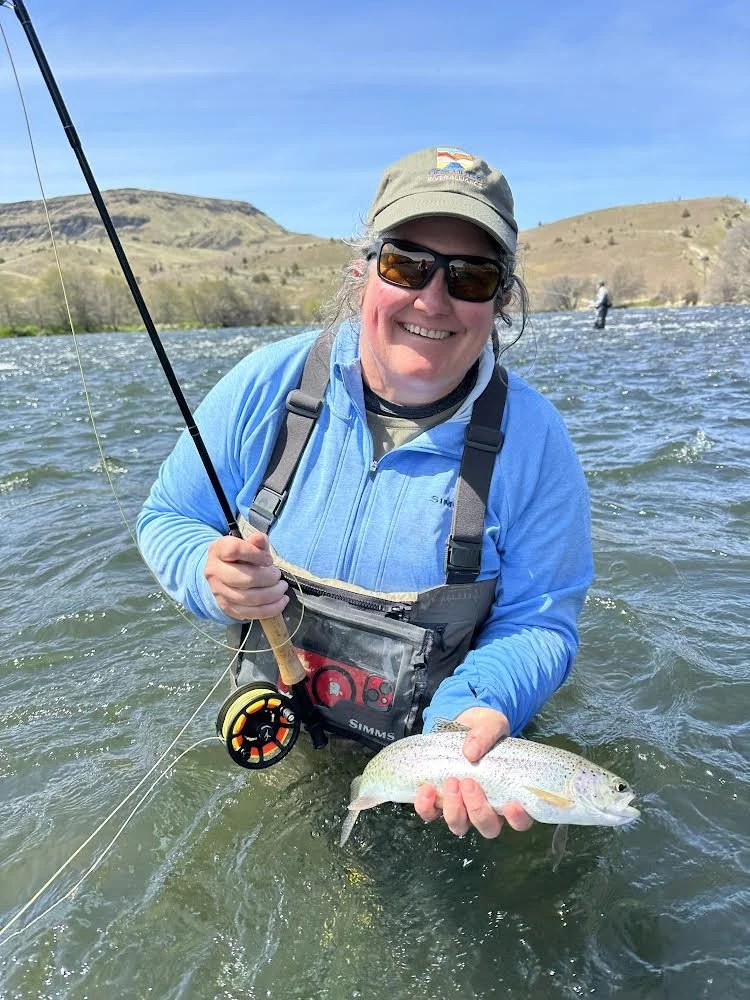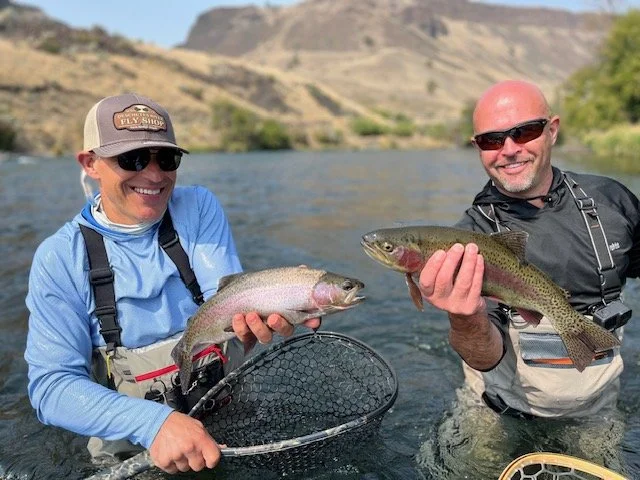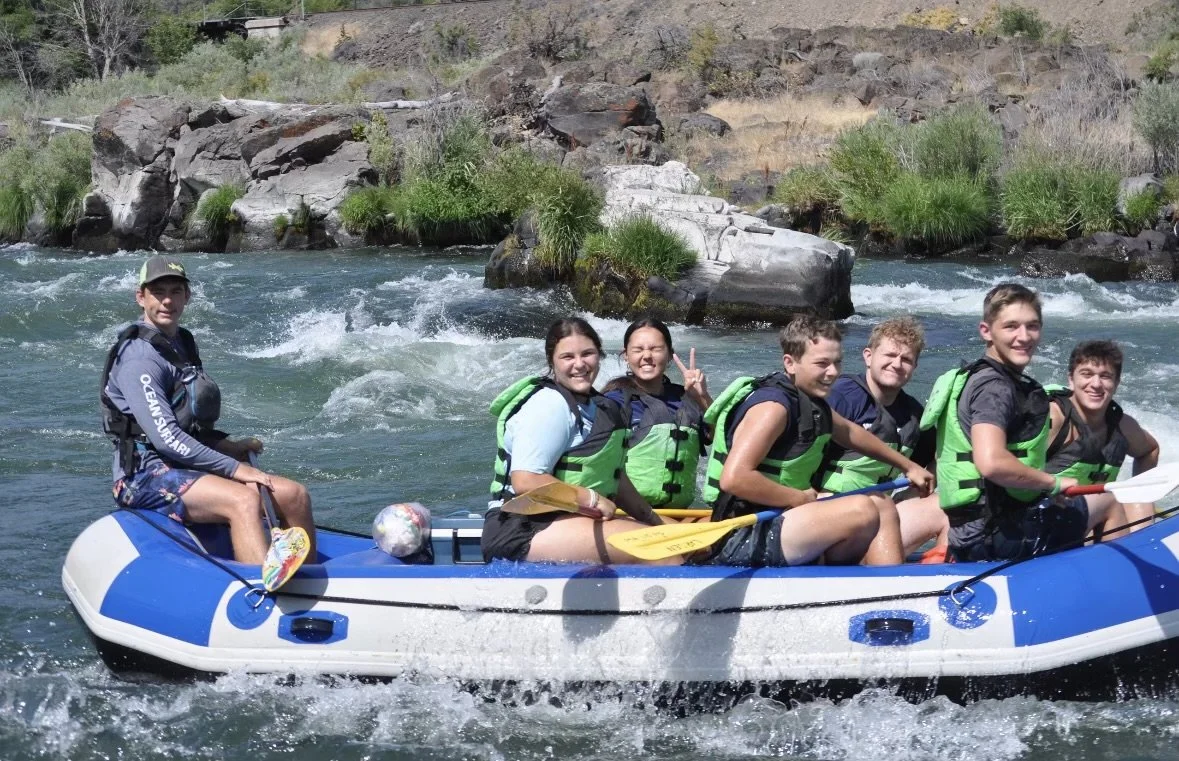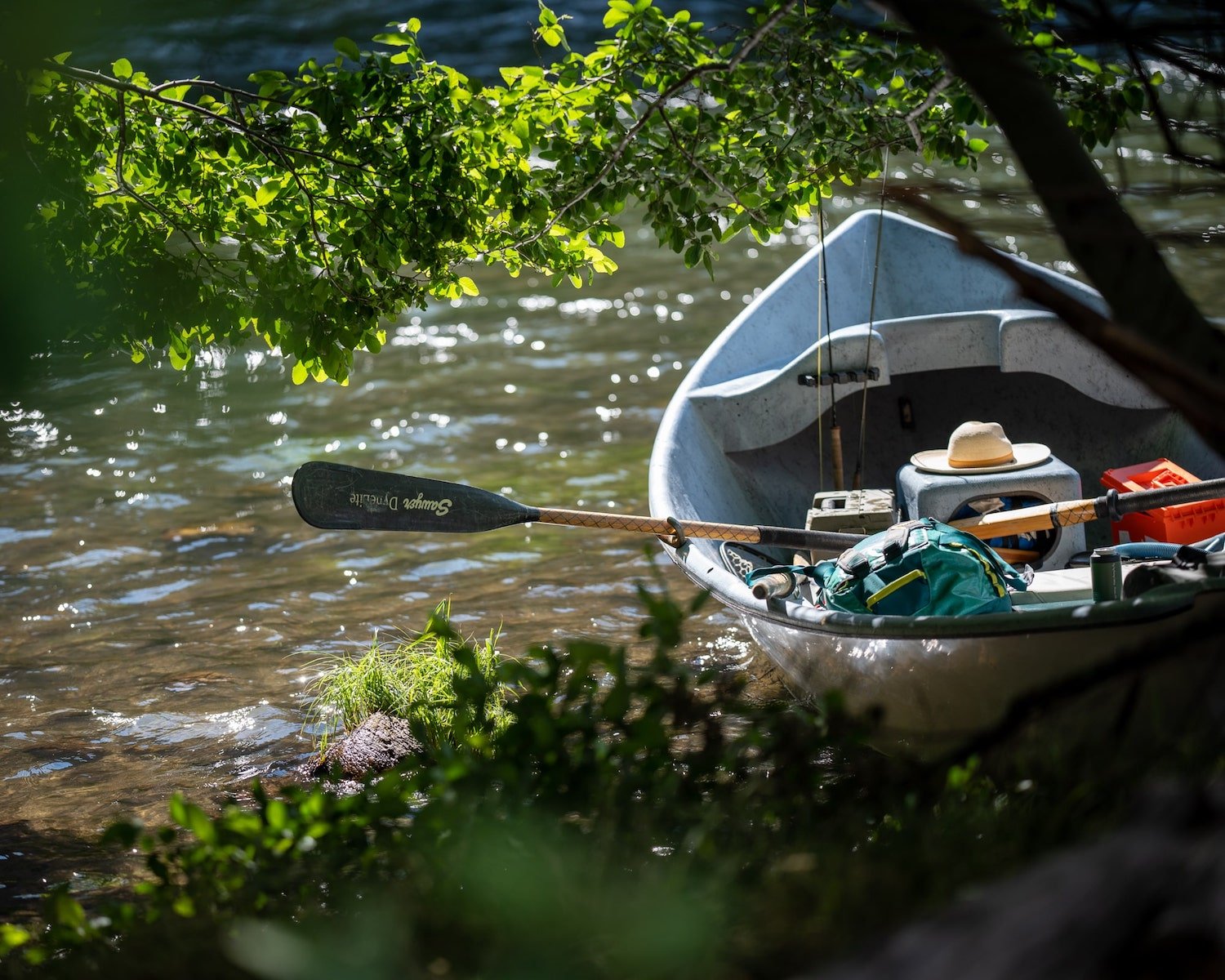Goodwill Ambassador of the Lower Deschutes: River Drifters
Splash and giggle: A raft full of fun tackles the rapids on the lower Deschutes. Photo courtesy of River Drifters
Deep Roots on the Deschutes
Tim Thornton knows the Deschutes. “Fly-fishing was a cheap vacation for my parents,” he recalls. “Throw some kids and some rods in the VW van and off we went.” He grew up in Bend, and figures his first trip to fish the Deschutes was in 1979. So he remembers–vividly–the river before the days of algae and warmer water and the consequences of the Selective Water Withdrawal Tower and subsequent changes in dam operations.
Thousands of river days later, Thornton is still visiting the Deschutes, but his general responsibilities have grown considerably. He is the Operations Manager for River Drifters, part of a whitewater recreation economy on the lower Deschutes River that puts more people in touch with the river than anything else.
Cultivating Care for the River
River Drifters Master of Chaos Tim Thornton on the sticks.
Some 30,000 clients of River Drifters, or one of their competitors in Maupin, float down the river in rafts on half, full or multi-day adventures. Some of them do this without even considering fishing. Thornton grants that the average fly-fisherman might pay more attention to the nuances of river conditions. But the rafting business, he contends, plays an important role. “The educational piece is really important for us,” says Thornton. “The first time and place that many of our customers experience a river like the Deschutes is through us. So we have been responsible for teaching people everything from why they shouldn’t toss their dishwater into the river to bird and bug and fish identification.”
Thornton also has a significant portion of repeat customers, some of whom have been coming to the river long enough that they see and remember the difference between the pre-Tower and post-Tower river. It’s certainly something that Thornton remembers too. “It’s shockingly noticeable,” he says. “The amount of green slime on the rocks, and the algae growing in the water. The color of the water. And there’s far fewer bugs than there used to be.”
What’s especially frustrating for a long-time observer of the Deschutes like Thornton is the knowledge that Portland General Electric holds the keys to the fix. “The solution is cooler, cleaner water,” he says. “And unlike so many of our environmental problems these days, you can control this one.”
Back to the Future: The Return of the River
One cure for the Deschutes, Thornton says, is enthusiastic support for the Deschutes River Alliance. “The [lower Deschutes] River is home base, absolutely vital to the well-being of Maupin and the surrounding community, and a life-blood of central Oregon. We should all be supporting what the DRA is doing.”
Thornton sees his future self on the river, minus the school buses and flatbed trailers stacked with rafts. He recalls the days of fishing his favorite Deschutes haunts, jacking trout seemingly with every cast. He fondly remembers 15-20 fish days and misses the different type of connection with the river. Whitewater, and making a living around it, has only temporarily supplanted his enthusiasm for trout. “I’ll be that old guy with the drift boat and the dog someday,” he says.
More From The Blog
Subscribe the the DRA Newsletter
The Deschutes River Alliance is your focused voice to protect the lower Deschutes River, its cold water flows and the fish and wildlife that are sustained by them. We send regular emails with important data and news about the lower Deschutes River. We will not sell or loan your contact information to others.
How to Support the DRA
Everyone wants clean, healthy water in the Deschutes River. Oregonians cherish our clean and healthy waterways to provide drinking water, wildlife habitat and recreational activities. The lower Deschutes River is a federally designated Wild & Scenic River, and a national treasure. It must be protected for the environmental and economic health of Central Oregon. We believe by working together we can return the lower Deschutes River to full health.























